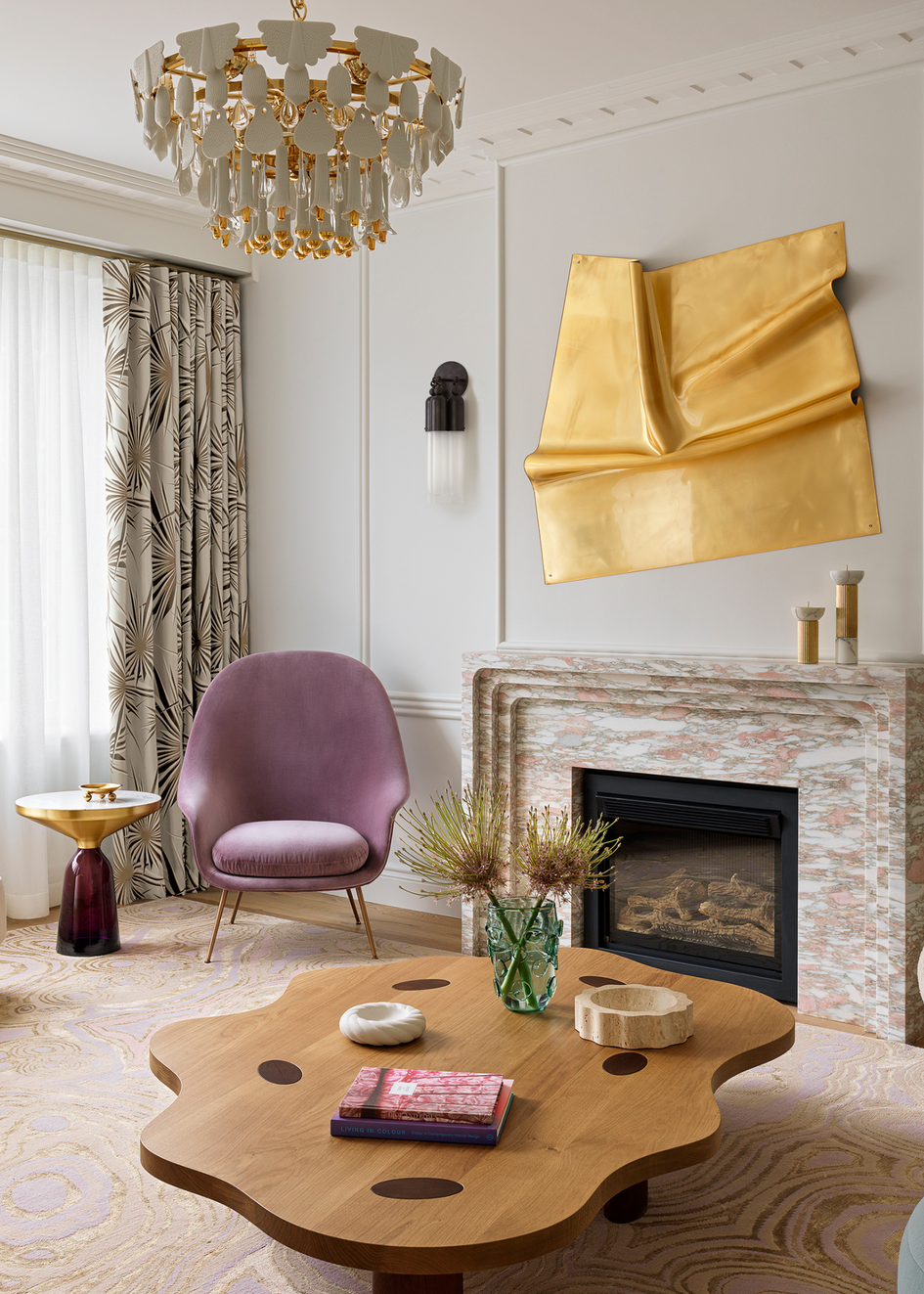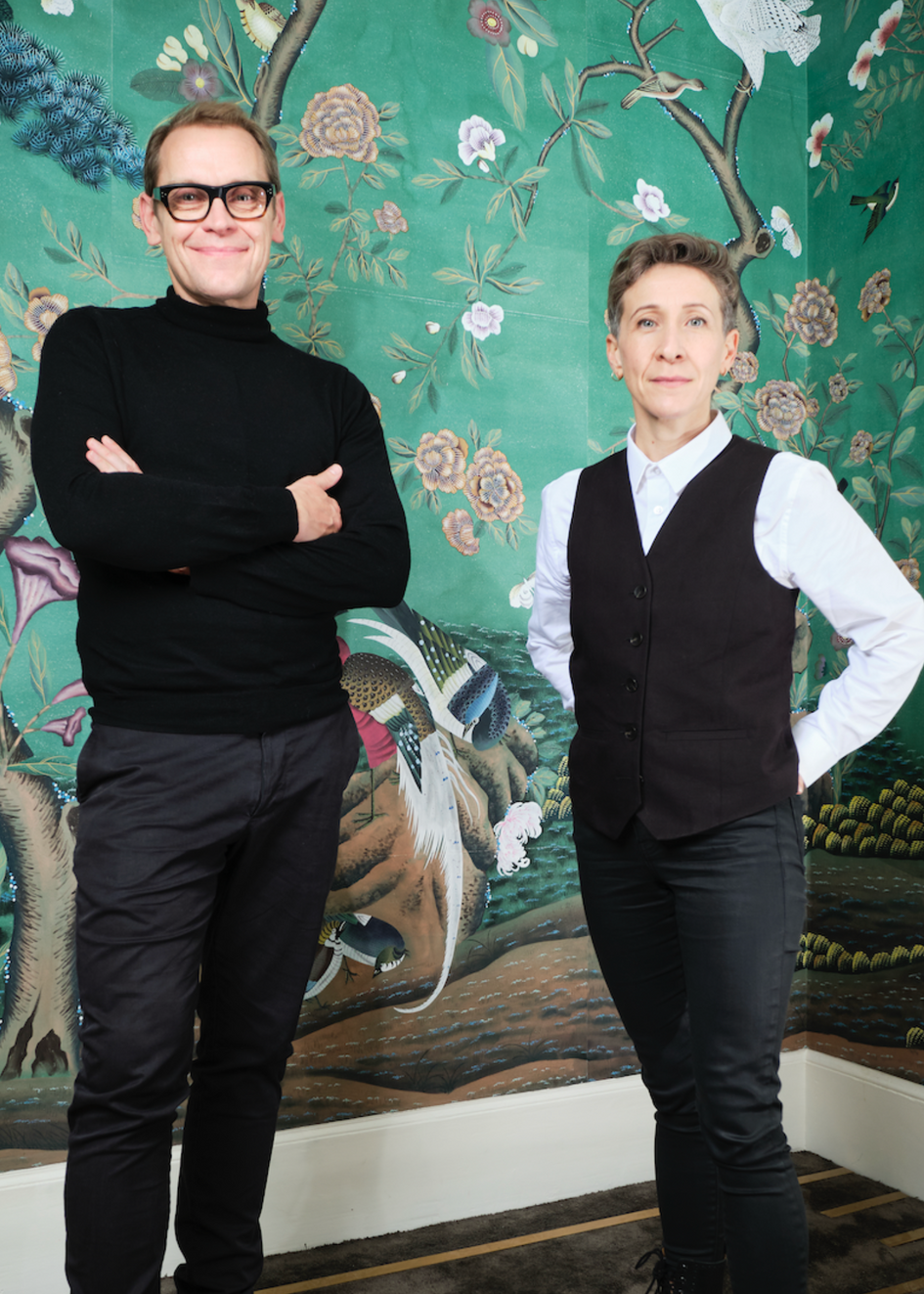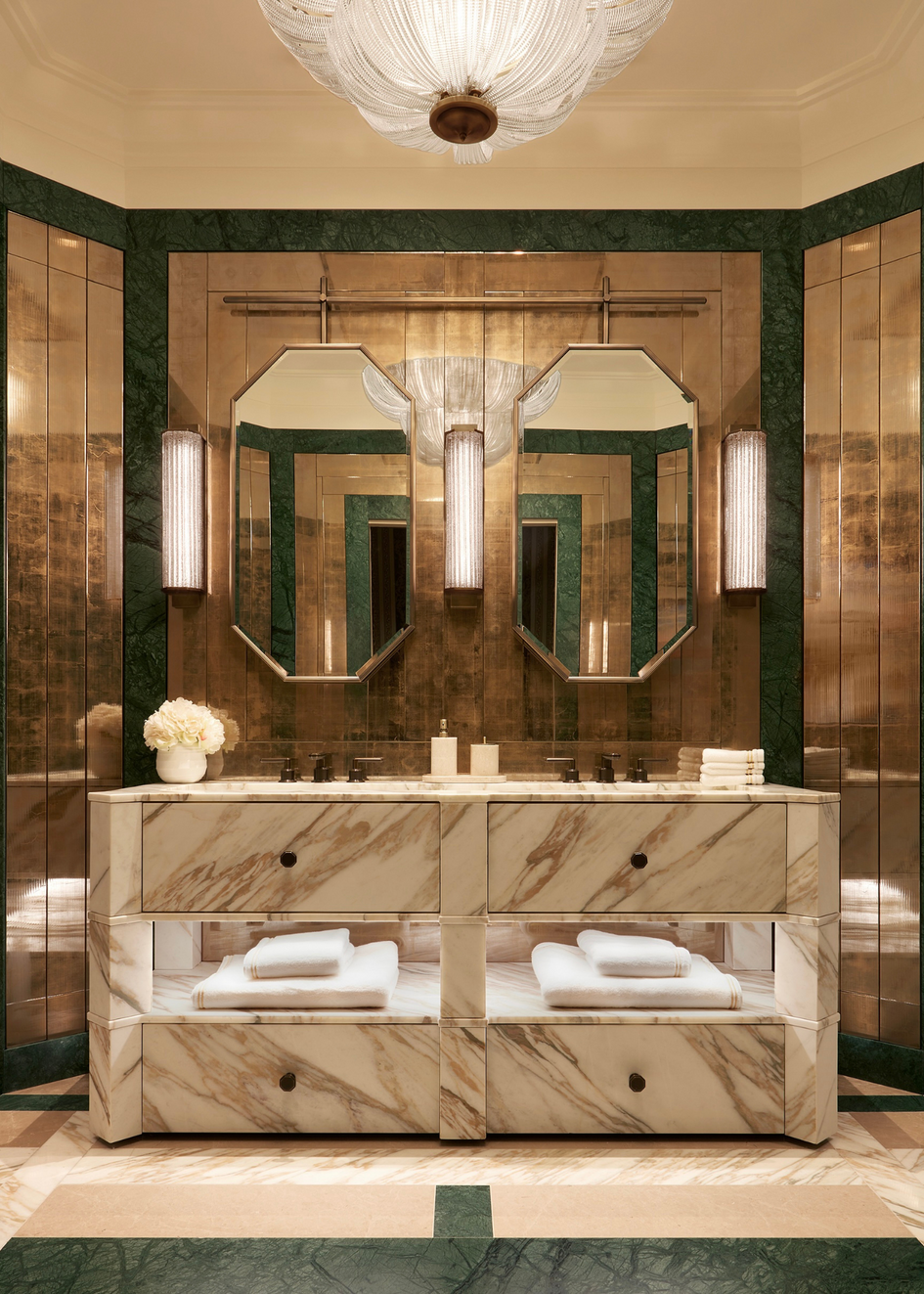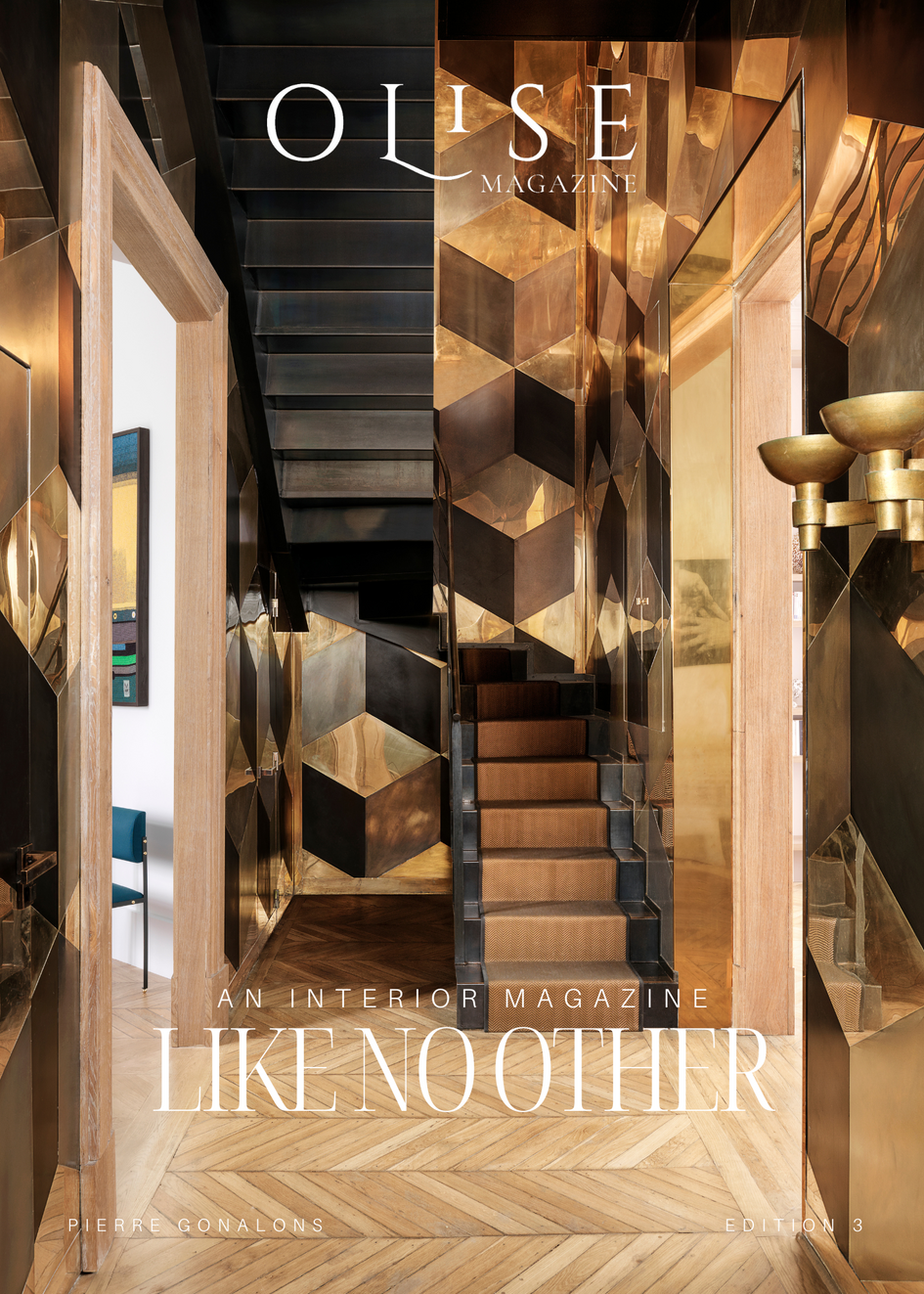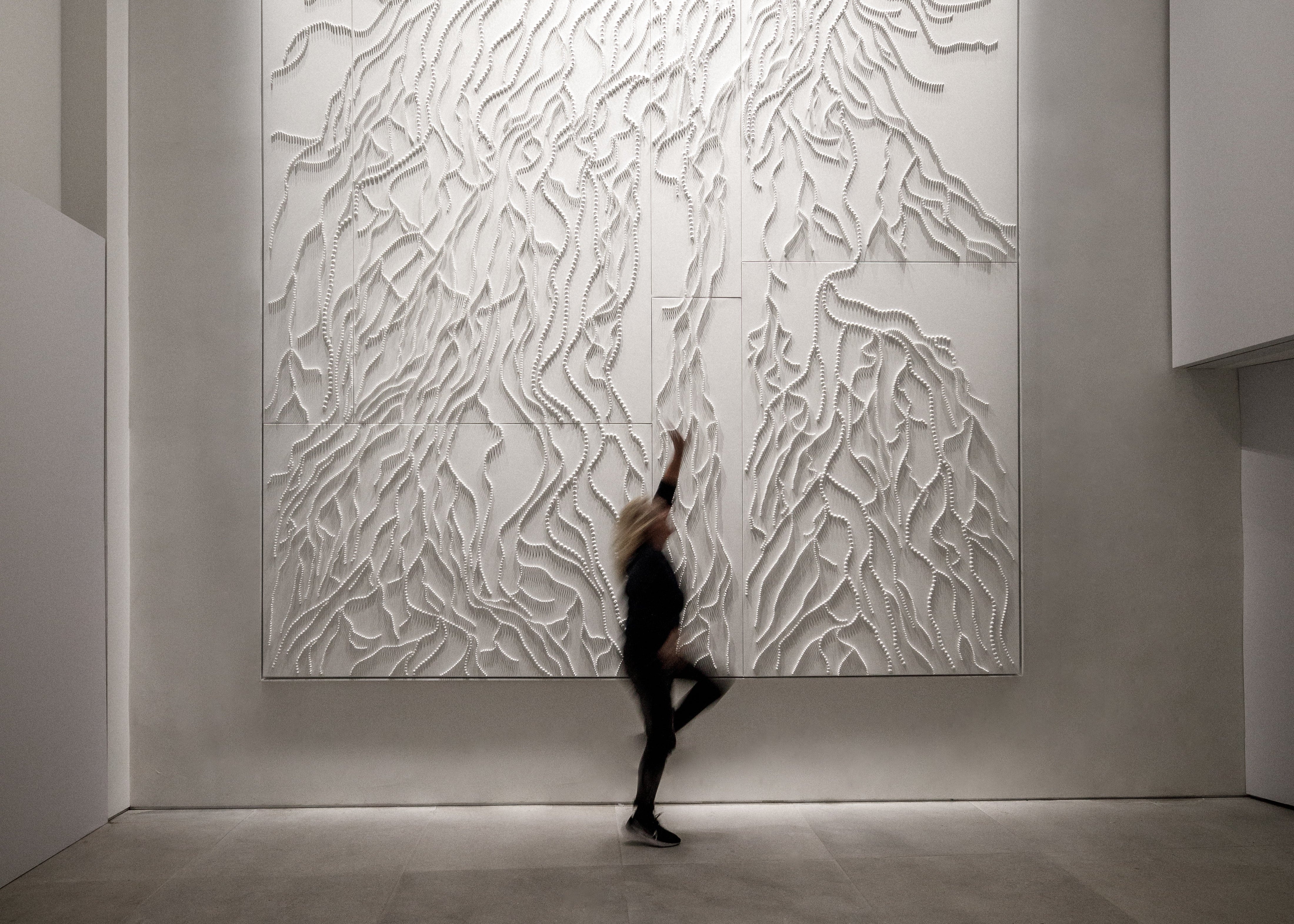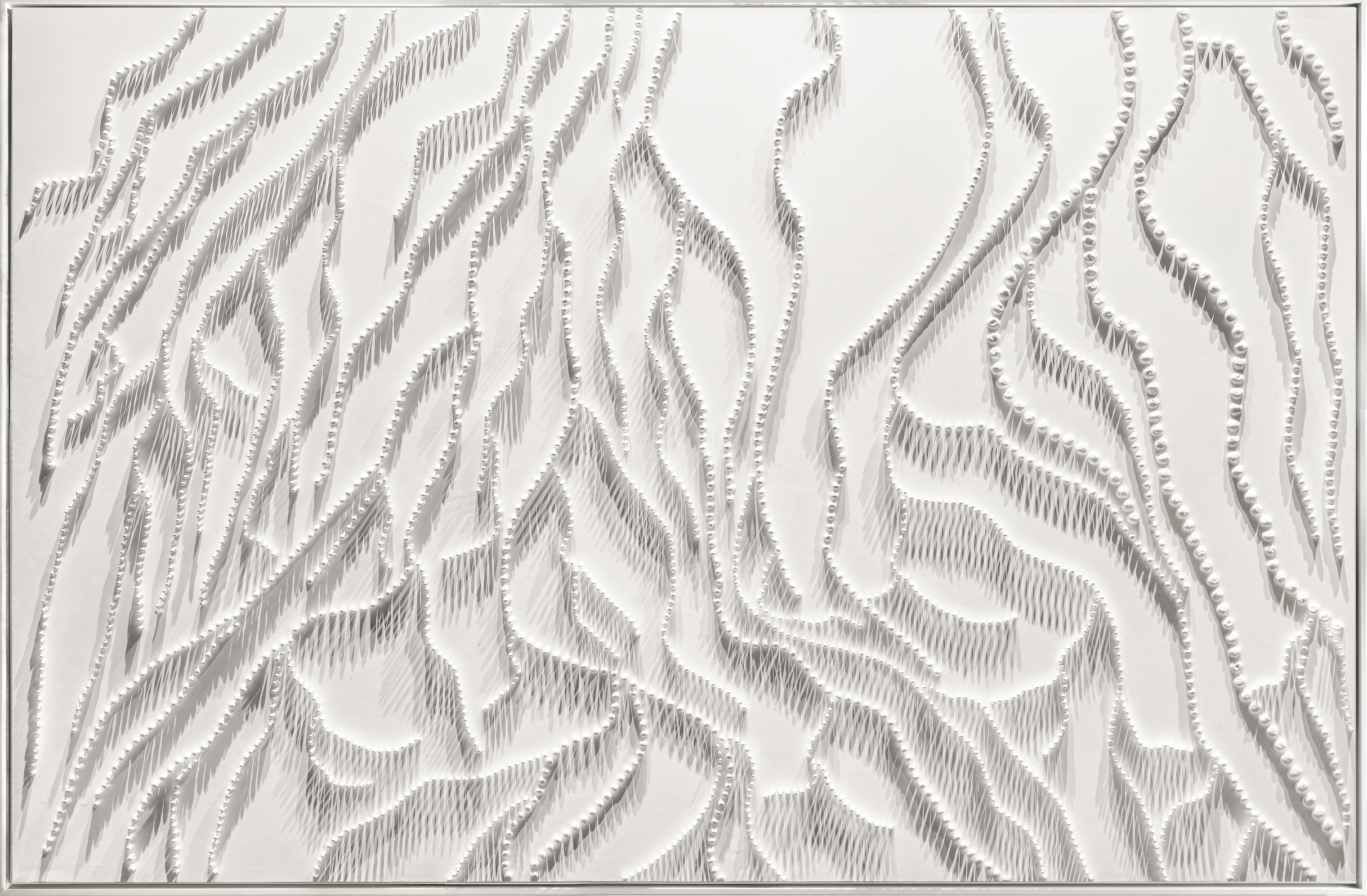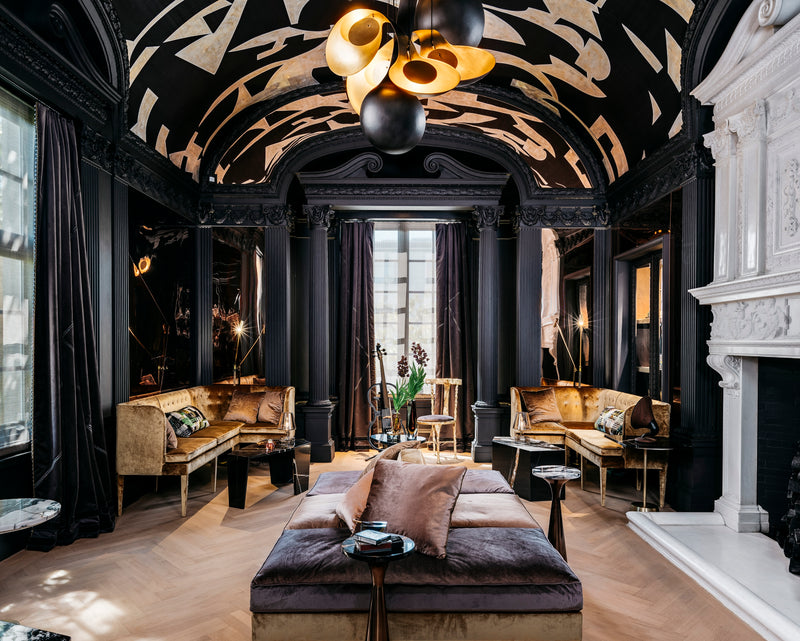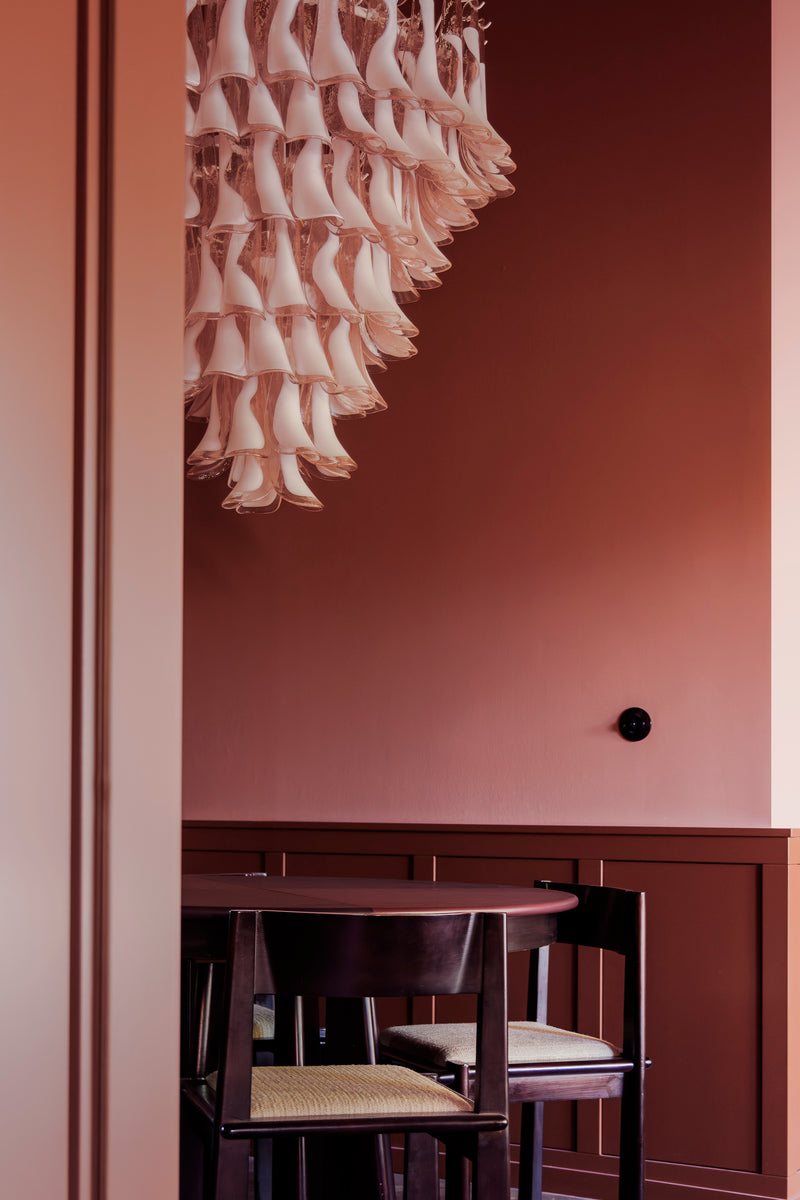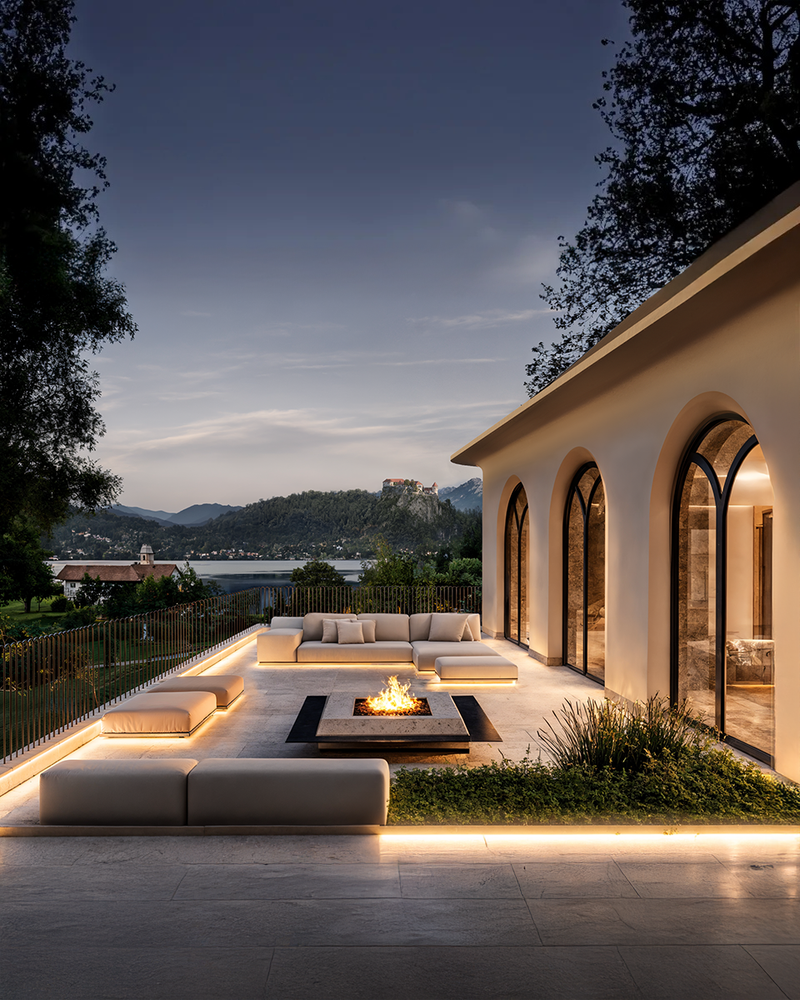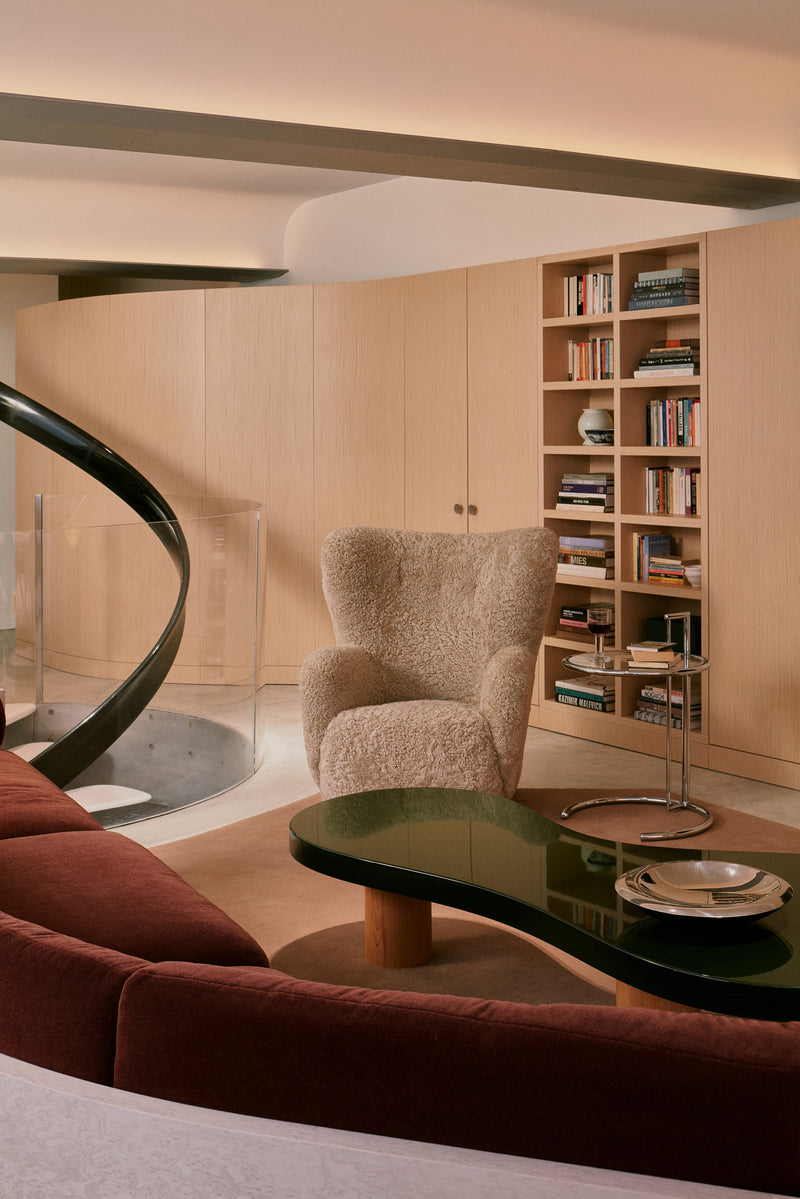Drawing with Air: The Art of Jane Puylagarde
EXPERTS 01.07.25
Working between Paris and Formentera, contemporary artist Jane Puylagarde captures the eternal rhythms of nature and the universe, one droplet at a time.

Q: Jane, your journey from law and fashion to art is remarkable. What inspired this transition, and how do those past lives shape your work today?
The transition was inevitable, art felt like the only path that made sense for me, driven by the need to live from passion. My earlier experiences in law and fashion instilled in me a profound sense of discipline, an eye for pattern, and a steadfast independence. These qualities are integral to my artistic practice today, informing everything from how I approach my materials to how I structure my creative life.

Q: Each droplet in your paintings is layered with precision and care. What does the process teach you, emotionally or creatively?
Each droplet is a meditation. The process demands patience and meticulousness, and I find a sense of serenity within every droplet is an act of patience, a meditation in itself. Layer after layer, I find a serenity and a meticulous joy that becomes almost transcendental. It’s a delicate dance, each drop exalted!


Q: You often speak of balancing the infinitely small with the infinitely vast. What draws you to that tension?
I’m fascinated by the cosmos and the way life operates on both a microscopic and a planetary scale. We humans are, in essence, just dust and atoms in this vastness. My interest in mathematics also feeds this curiosity, it’s a way of understanding the interconnectedness of all things.

Q: Light feels like a material in your work, ever-shifting, never still. How do you choreograph its role in each piece?
Light is like my second brush. I always think of the outgoing of the shadows, which guides how I choose the sizes of my drops. Preparatory drawings are crucial, but ultimately, light shapes the final work. It keeps the piece alive forever shifting, forever becoming.

Q: You’ve replaced the brush with a hairpin, what a bold choice! How did that decision come about, and what does it unlock for you?
It was a moment of experimentation that turned into a revelation. The hairpin allows for an intimacy and precision that a traditional brush never gave me. It unlocks a direct, almost visceral connection with the canvas, bringing me closer to the tactile essence. Choosing a hairpin over a brush was essential. It allowed me to grow the droplets, to make them fuller and taller. I simply needed a tool that was better suited to this larger scale.
Q: Jane, you divide your time between Paris and Formentera. How do these two places feed your imagination differently?
I wasn’t a nature person growing up.I was shaped by architecture, by Paris. The energy and beauty of the city fuelled my creativity in those early days. My beautiful trip to Japan was a turning point, where I discovered a relationship between humans and nature that felt like poetry in motion, a harmony so different from my own culture.
In Japan, I saw how nature is not just observed, but lived with, honoured, and cherished in every gesture. It was an awakening, a gentle reminder that we are not separate from the natural world, but part of its endless rhythm. Then I decided to move to Formentera, which infused me with nature’s rhythms, the beaches, the forests. It taught me to slow down, to see things differently, especially thanks to my dog Linda. My series A Forest and Elevations were born from that shift in perspective.

Q: We must say your work feels rooted in nature, titles like A Forest and Cosmos invite us to look closer. How do landscapes or ecosystems show up in your practice?
Nature is a constant source of inspiration, landscapes, organic forms, natural patterns. They speak of growth, interconnectedness, and balance. My work draws on these elements, but it’s never a pretext for environmental activism. I’m driven purely by the Above all, my work is connected to nature in the spirit of eternity, an homage to the boundless life force that flows through every leaf and every shadow. It is a painter’s humble wish: to translate the beauty of a feeling and to share it with others, as a sentiment that belongs to everyone and transcends time. A feeling that lingers eternal, like nature itself.

Q: Your work has been described as “The New Pointillism.” Do you feel connected to that lineage, or are you carving something entirely new?
I feel deeply connected to that lineage. My technique, with its tiny droplets and careful layering, is a direct dialogue with pointillism. But I also feel I am pushing it further, carving a path that is entirely my own. It’s both an homage and a new language.

Q: Can you share something special with OLISE readers, an upcoming project, a new direction, or a moment you’re excited to step into?
I’m currently working on a new series called Higueras. It’s a project I’ve been developing for a few months now. This path I am currently exploring will bring a new dimension to my technique, perhaps even new colours, and bichromies. It’s a journey that feels entirely fresh and alive for me, opening new doors of expression and possibility.


